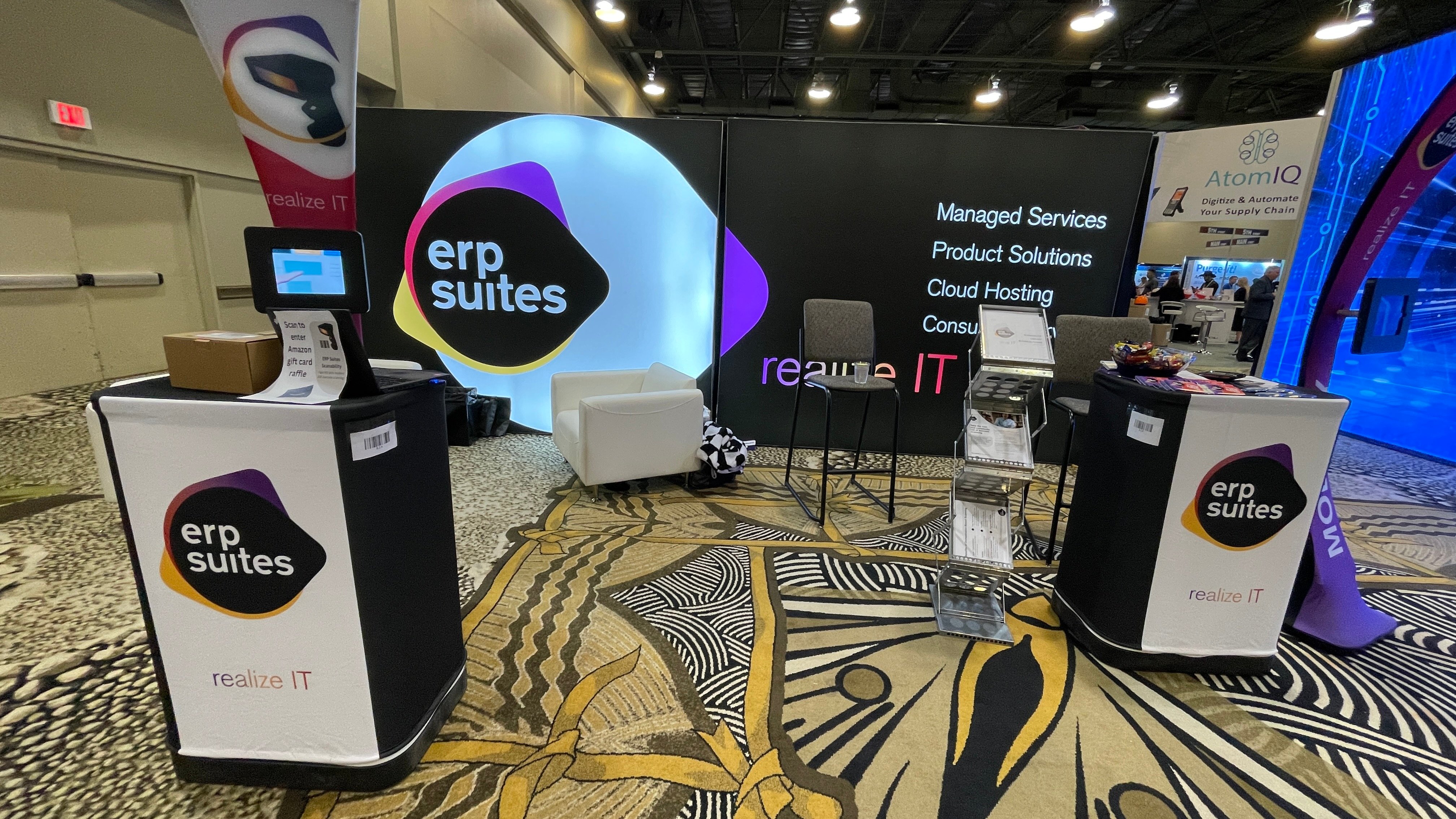
We’re talking about all things cloud with Paul Shearer, the Cloud executive director with ERP Suites. A longtime JD Edwards professional, Shearer has 25 years of experience in the sector and is passionate about the potential of the cloud. Read on to hear directly from Shearer about Cloud basics, the difference between the types of clouds, and how privately managed clouds like the hosting performed at ERP Suites can make your job easier and your company more efficient.
Most everyone has heard of the cloud, but, can you give us a quick overview of what the cloud is?
The cloud is a nebulous term. It can refer to anything from where your iTunes music is being stored to just basically server infrastructure. At the highest level, I divide up the world of the cloud into three distinct buckets.
The first bucket is cloud infrastructure. Think of this as just servers and operating system instances.
The second bucket is platform as a service (PaaS). In this category, you have the services, such as a database. Instead of worrying about the underlying infrastructure, you’re just getting the database as the service, or any number of products where whatever that product is used for, the complexity of it is being abstracted away, and you just provision the product itself and use it.
Third, we have applications. This is referred to as software as a service. What I always tell people to think about, because everyone has familiarity with it, is Netflix. Netflix is the ultimate software as a service. You go to it, you log into it, you watch your content. On a business application side, other examples would be Office 365, where you’re using that for email – that would be software as a service. Another example might be something like Salesforce, or HubSpot.
What is the difference between the public cloud and the private cloud?
When we talk about the private cloud, we’re talking about data centers that we physically [and privately] own – we own all the assets in the data center. When we’re talking about public cloud, we’re talking about [publicly accessible platforms like] AWS, we’re talking about Azure, and we’re talking about OCI. There are more public clouds than that, but those are generally the three that we’re focused on.
Anything that you can do in your private cloud, you can also do on the public cloud. Some of the mechanics might be slightly different for how you’re accomplishing it.
What you’ve got to be aware of is that software licensing restrictions sometimes are cloud dependent. So, what you may not be able to do is bring your existing software licensing to the cloud.
Most of the time, customers don’t even know. A lot of times, they’re getting themselves into a situation where they’re creating a liability for themselves unaware.
How do you help customers who decide to make the switch to the public cloud?
The first thing I do is figure out if they have a problem or not. We do that by asking questions about how they’re licensed. Those questions include: What operating system/database product are you using? How are you licensing that product?
For instance, sometimes customers are using Oracle Enterprise Edition and we need to bring them to the public cloud. We figure out, ‘Okay, how can we meet or exceed the current performance capabilities of the system, but do it in a manner that does not create any new license constraints?’ We go through and right-size everything. The customer is left with a bunch of headroom where they can grow, they can expand that footprint, and don’t have to buy any more licenses.
We’re serious about getting this right.
What are the top three things I should think about when considering the switch to the public cloud?
Number one is licensing. Number two is storage. And number three is egress, sometimes referred to as the exit tax.
Public Cloud Licensing
Sometimes you can’t bring over your licensing as-is. Sometimes that means you have to get new licensing through a new mechanism, get more licensing because the quantities are going to change, and really do a bunch of due diligence to make sure you can still right size and fit things within your existing licensed footprint without incurring any new liabilities.
Cost of Storage
You should also look out for the cost of storage. The cost and how much you’re going to end up using always surprises everyone. It’s more than they’re expecting, and a lot of times it’s because they’re not accounting for the storage that gets used for backups.
Egress Cloud Exit Tax
Any network traffic coming into the cloud is free, but any network traffic leaving the cloud, you have to pay for it. If you put yourself in the position of a public cloud, you want data coming into the cloud. You want to encourage people to bring more and more data into the cloud and process it. Whenever data is leaving the cloud, that may mean that data is getting processed somewhere else, and the cloud doesn’t like that. For every gig of data that’s leaving the cloud, you are charged very high rates for it. People don’t think about the impact from a networking standpoint of how much data is going to leave the cloud.
Bonus: Right Sizing
Here's where I’ll add a fourth thing to look out for: Right sizing the environment as part of the migration. One of the best practices is that anytime you’re going to do a cloud migration, do the analysis upfront on what resources you really need. Don’t simply match what you have today. The reason is because a lot of times, especially in the VMware environment, you may have the same CPU being used by eight different servers at the same time, but each of them are only using a small slice of it, so it doesn’t matter how many you’re allocating. But then you go to a cloud environment, and now all of a sudden, you’re paying for eight times the amount of hardware that you actually need. It’s a pretty sizable problem where people end up massively overspending on cloud infrastructure because they’re not doing that due diligence up front.
We offer a free assessment as part of the migration process. We’re capturing some of the performance data and then we’re mapping it out. What’s your best case scenario with AWS, best case scenario with Azure, with OCI? Then we show a side-by-side comparison, both from an economics as well as from a performance standpoint.
What advantages does switching to the public cloud offer?
There are some things you’re probably already doing in the private cloud, but there can be a lot easier ways to do it in the public cloud. Let’s use disaster recovery again as an example.
The public cloud has this concept called regions. Each region is a separate geographic area, and generally these regions correspond to separate FEMA regions. FEMA has done all this complicated engineering to figure out, from a statistics standpoint, that if a disaster happens in one region, it is vanishingly improbable that a simultaneous disaster would happen in another region.
We architect our disaster recovery strategy by piggybacking on their math. Say for instance your JD Edwards is hosted on AWS in Virginia, we’re going to put your disaster recovery in Oregon, on the other side of the country. There’s a very easy mechanism called DRS – disaster recovery service, formerly known as Cloud Endure – that is replicating changes that happen to individual servers in real time, across the wire. You don’t even have to recover anything, the actual underlying hard drive backup is going to be within ten minutes of how it last was. It’s a very low-cost method of getting disaster recovery. Whereas if you’re doing it on prem yourself, you have to have all of your hardware on the second site, and you have to be paying for it all of the time.
Cloud Readiness Assessment
In conclusion, as you explore the benefits of migrating your workload to the cloud, it's essential to consider the next steps. After identifying your reasons for migration, the logical progression is to conduct a cloud readiness assessment. This evaluation entails thoroughly assessing your business applications, infrastructure, data, and resources. The focus shifts from simply figuring out "how to move" to determining if a migration is feasible and economically viable for your specific business needs. Take the proactive step of conducting a cloud readiness assessment to make informed decisions about the future of your workload in the cloud.
Leyla Shokoohe is an award-winning journalist with over a decade of experience, specializing in workplace and journalistic storytelling and marketing. As content manager at ERP Suites, she writes articles that help customers understand every step of their individual ERP journey.


.png?width=650&height=325&name=Blog%20Images%202_1%20(5).png)
.png?width=960&height=540&name=Blog%20Images%20(47).png)
.png?width=960&height=540&name=Blog%20Images%20(46).png)

